Individuals who enjoy saltwater aquariums, they have probably come across the terms “protein skimmer” or “marine skimmer”. In this guide to marine skimmers, we will explore the purpose and function of these indispensable tools.
Protein skimmers for saltwater tank play a significant role in maintaining saltwater aquariums by eliminating protein foam and oil biofilm.
Although not mandatory for tank prosperity, protein skimmer marine tank act as additional filtration devices with extra advantages such as enhanced water oxygenation, efficient gas exchange, and decreased reliance on frequent water changes.
Disclosure: This article contains affiliate links. When you follow a link to purchase the products, I sometime earn a commission, at no additional cost to you. Read my full disclosure here
What Is A Saltwater Protein Skimmer?
Protein skimmer is a device that plays a critical role in marine aquariums by efficiently removing organic waste, suspended particles, and unwanted pigments from the water. By using foam fractionation to capture waste in a removable collection cup, these devices make it easier to maintain the aquarium’s cleanliness.
Moreover, protein skimmer for saltwater tank facilitate proper gas exchange and help sustain stable pH levels, which are essential for the overall wellness of marine organisms.
In essence, the protein skimmer purpose is to improve water transparency while supporting the health of the entire aquatic ecosystem.
How Does A Saltwater Protein Skimmer Works?
If you are wondering how does a protein skimmer function, then this is how it works;
1. Introduction of Air Bubbles: The skimmer pump introduces numerous small air bubbles into the aquarium water.
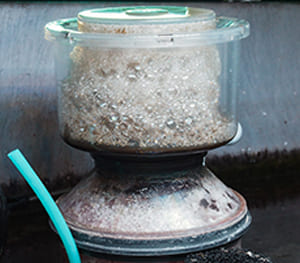
2. Formation of Foam: These air bubbles generate a dense foam within the skimmer body as they ascend.
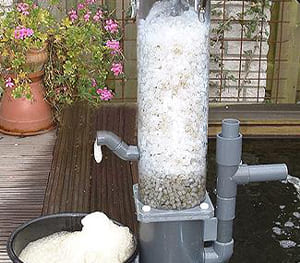
3. Attraction of Organic Substances: Hydrophilic waste materials are attracted to the surface of these tiny air bubbles.
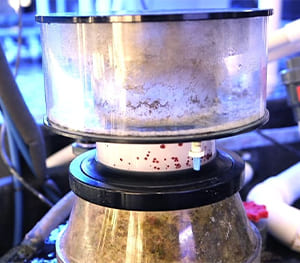
4. Bubble Fusion: As the foam rises through the skimmer body, smaller bubbles merge and create larger ones.
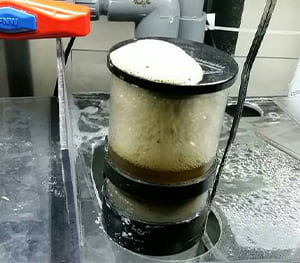
5. Waste Accrual: These larger bubbles transport the trapped waste up to be collected in the skimmer’s collection cup.
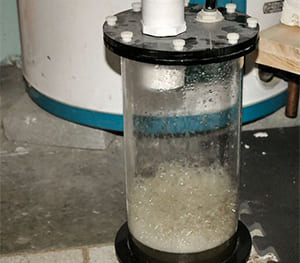
6. Removal of Accumulated Waste: The accumulated waste can be conveniently removed from the aquarium system by emptying the collection cup.
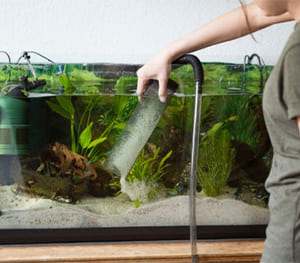
7. Utilization of Hydrophobic-Hydrophilic Properties: This process takes advantage of the natural properties of organic compounds, which can either repel or attract water, allowing them to separate at air-water interfaces.
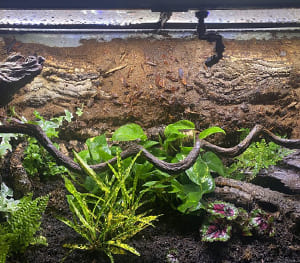
8. Key Components: A typical protein skimmer for saltwater tank consists of several components including air injection (using air pumps or venturi intakes), a contact chamber for foam formation, and a waste collection cup.
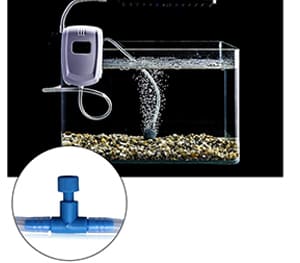
9. Enhanced Efficiency with Ozone: Pairing protein skimmers with ozone can enhance their efficiency by accelerating waste breakdown and reducing nitrates and phosphates in aquarium water accumulation.
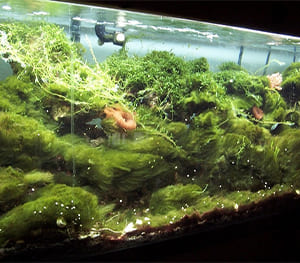
Why Do You Need A Saltwater Protein Skimmer?
A protein skimmer purpose is not just simply eliminating organic substances but it’s beyond that! Here are a few functions that can help you understand protein skimmer purpose and why your aquarium needs it;
Cleaner Water
Protein skimmer for saltwater tank plays a crucial role in maintaining clean water by effectively removing these waste materials. This cleanliness contributes to the creation of a stable and thriving environment for your fish and other inhabitants of the tank.
Reduced Phosphate and Nitrates
Additionally, protein skimmer purpose includes, reducing levels of nitrate and phosphate compounds in the water due to its efficient removal of organic waste.
As a result, this reduction helps prevent undesirable algae outbreaks that can negatively impact the overall health and balance of the ecosystem within your aquarium.
Moreover, with fewer amounts of such compounds present, you will find yourself requiring less frequent water changes as well as reduced maintenance on your filters.
Improved Water Clarity
The protein skimmer function contributes to the improved clarity of aquarium water by removing pigments that can cause a yellowish tint. This protein skimmer purpose results in aesthetically pleasing tanks with clear water, allowing for optimal light penetration and unobstructed viewing.
Enhanced Gas Exchange
Protein skimmer for saltwater tank create dense foam comprised of numerous small air bubbles, providing an extensive interface between water and air. This promotes efficient gas exchange, which is crucial for maintaining proper oxygen and carbon dioxide ratios in your tank.
By reducing excess carbon dioxide levels, the skimmer helps sustain a higher pH level and prevents fluctuations that could negatively impact tank stability. For even more effective pH control measures, the protein skimmer purpose can be increased by coupling it with a CO2 scrubber further reducing carbon dioxide content.
The Secondary Benefits of Protein Skimmer
The protein skimmer purpose does not end with the above benefits. Here we have presented a few more that are considered as secondary benefits of protein skimmer.
- Decreases phosphate levels, preventing the growth of aggressive algae.
- Takes biological toxins out of invertebrates, algae, and corals.
- When combined with a sump, supports a high bioload.
- Protein skimmer for saltwater tank increases oxygen levels and improves gas exchange, leading to healthier aquatic life.
- Another protein skimmer purpose is, that when we combine it with an ozonizer, it improves redox balance and lowers disease-causing organisms.
- Prevents the buildup of carbon dioxide, which controls pH.
- The protein skimmer function enables better light penetration and supports photosynthesis in plants by clearing surface debris.
Drawbacks of Protein Skimmer
A protein skimmer for saltwater tank has a few drawbacks when used in a fish tank.
- First off, in addition to toxins, protein skimmer function can also remove necessary components like minerals and vitamins that are produced by plants, food, and chemicals. Your fish might experience health problems as a result of this. It’s critical to add these nutrients to your tank after the skimmer runs to combat this and keep your fish healthy.
- Second, the price of protein skimmers—often several hundred dollars—can be prohibitive for some aquarium enthusiasts. However, the advantages of better water quality can make the cost justifiable for those who have large or expensive fish.
How To Setup A Saltwater Protein Skimmer?
Step 1: Installation
Submerge the skimmer in water and connect it to a power source. This will initiate the production of air bubbles.
Step 2: Bubble Elevation
The elevation of bubbles within the skimmer chamber is essential. In the case of an internal protein skimmer for saltwater tank, ensure that both the neck and cup are positioned above the water surface level.
For tanks with hoods, make necessary adjustments to accommodate the protrusion of the skimmer cup above the waterline while maintaining consistent water level stability.
Step 3: Automatic Water Level Maintenance
To ensure a consistent water level in the protein skimmer marine tank, consider implementing an auto top-up system in the main tank when utilizing the skimmer. Alternatively, if using a sump setup, adjust the water level within the skimmer chamber by incorporating a baffle.
Step 4: Modifying Bubble Height
When employing internal skimmers in sump setups, manually regulate the water height inside the skimmer to allow air bubbles to ascend up to the neck’s base gradually. This process promotes smooth protein skimmer function along with continuous production of skimmed waste that will overflow into the collection cup over time.
Step 5: Calibration
Many protein skimmers for saltwater tank that rely on sumps have mechanisms, such as knobs or pipes, to control the height of bubbles. It is recommended to adjust these so that the bubbles ascend slightly below the neck of the collection cup.
Step 6: Monitoring Tank
Regularly inspect the cup of protein skimmer marine tank for water accumulation. If it fills rapidly, consider lowering the bubble height to optimize efficiency. Conversely, if no residue collects over several days, consider increasing the bubble height accordingly.
Step 7: Maintenance
It is recommended to collect dark brown skimmate every few days or twice a week. To control the protein skimmer function, you can adjust the air intake and utilize a pump controller if necessary, particularly with DC skimmers. Begin by setting both the pump output and air intake to their maximum settings, then carefully regulate bubble height using either a pipe or valve.
What Is The Best Saltwater Protein Skimmer?
The ideal protein skimmer for you will depend on your preferences and aquarium setup. There are numerous types to choose from depending on protein skimmer function:
Internal skimmer
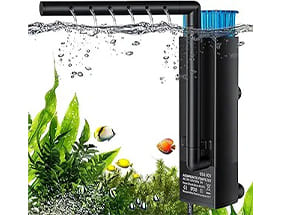
Quick view on Amazon
Available in: Australia, Canada, UK and US
Protein skimmer for saltwater tank that are internal to the main tank must have their neck and cup above the waterline. They work well with tanks that have movable hoods.
Hang-on Skimmer
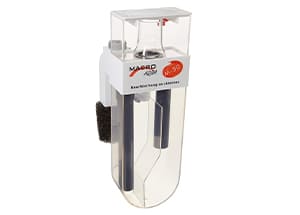
Quick view on Amazon
Available in: Australia, Canada, UK and US
Despite being simple to install and attach to the tank’s exterior, hang-on skimmer units might not be as effective as other models.
Sump-based skimmer
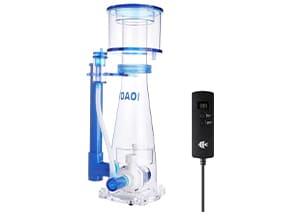
Quick view on Amazon
Available in: Australia, Canada, UK and US
Internal (located inside the sump) and external (located outside the sump) are the two categories of sump-based skimmer.
Sump-based internal skimmers are frequently regarded as the best overall option among these possibilities. This protein skimmer function well and has the added advantage of keeping any overflow inside the sump, lowering the risk of flooding. Skimmer guardians can also cut the power in case of an overflow, adding an extra layer of security. The setup of your tank and your level of comfort ultimately determine which skimmer is best.
Conclusion
In summary, protein skimming is recognized as a highly efficient technique for removing dissolved or particulate organic substances from your saltwater aquarium. Despite the availability of different models, they all share a common objective: enhancing water quality.
Therefore, if your aquarium is lacking a saltwater protein skimmer, we hope you are convinced enough to install one now!



